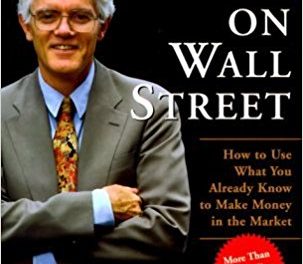Benjamin Franklin once said, “If you fail to plan, you plan to fail”.
This especially true when it comes to your financial future. Proper financial planning requires going beyond broad long term goals like “I want to be a millionaire!” You have to get to those goals by setting up short term milestones along the way.
Your long term goals provide a target to move towards, but once you have a solid investing foundation, you need to shift your focus from a macro view to the more immediate future to create opportunities for yourself. Keep in mind the correlation between risk and reward. If your immediate goals are focused on big gains, it’s important to understand that this could mean buying into riskier investments
According to CNN Money, 
“There is a direct relationship between risk and return. The less risk you’re willing to take, the lower the return you’re going to earn.”
High return investing can be extremely lucrative. And exciting. Just remember that it’s also a high risk way to move closer to your long term goals..
How Do I Know if An Investment is High Risk?
High risk investments involve a higher likelihood of losing some (or all) of your principal investment. In these types of investments, don’t invest more than you can afford to lose. Some examples of high risk investing include: 
- Options Trading: Options are a financial derivative that offers a buyer the right — but not the obligation — to buy (call) or sell (put) an underlying asset at an agreed upon price for a set period of time. Options are extremely volatile, so there are no figures for average returns available. Options trading can provide huge returns for traders but can also decimate an account if things go poorly. If trading options, make sure you understand exactly how they work before investing.

- Currency Trading (FOREX): FOREX is the largest investment market in the world, and potentially one of the most lucrative thanks to constant fluctuations in global currency. This volatility can also result in huge losses when a currency swings in an unexpected direction. FOREX is also considered a high risk investment thanks to a much lower degree of oversight and excessive leveraging by traders.
Why High Risk Investments?
One of the key foundations of successful investing you’ll regularly hear about is diversification.
If you want to succeed as an investor, it’s important to spread out your investments and balance your risky picks with higher rewards against your safer picks with lower rewards. And while diversification does eventually mean adding high risk investments to your portfolio, there’s no standard amount to invest in each investment. But that amount varies from person to person.
Unlike low and moderate risk investments, high risk investments can accelerate the growth of your principal investment thanks to their higher returns. That means bigger gains in a shorter time.
With high risk investments, you can easily double your investment (or more) if you chose your investment correctly. However, you can just as easily lose your investment even more quickly.
all of what you invested. Whether or not that is worth the gamble depends on many factors.That’s why diversification and risk management is so important.
How much should you risk?
Before deciding how much you want to put into your high risk investments, you should examine the following:
- Goals: Why are you investing? Are you looking for short term money, funds to prepare for retirement, paying for your children’s college education, or something else? Having a clear understanding of your goals helps determine how aggressively you should invest. Longer-term goals don’t require an aggressive timeline, which means you can focus on safer, low risk investments. On the other hand, if you find yourself in need of funds quickly, high risk investments make more sense.

- Age: Another important factor to consider is your age. If, for example, you’re in your early twenties and already started saving for retirement, you have ample time to build your nest egg. That means you can make safe, long term bets. However, it also means you have plenty of time to recover from high risk losses, giving you a chance to make some riskier bets on your investments.
- Personality: Simply put, some people gamble more than others. Being aware of your own personality and risk tolerance can help you determine your best course of action. This can also help you adjust your investment strategy if you feel you’re being too aggressive, or not aggressive enough.
Motley Fool, a well-known investment website, suggests an easy to use equation to determine what percentage of your assets to allocate toward high-risk investments: just take your current age and subtract it from 110. That equation means that the younger you are, the more aggressive your investing can be. However, it also adds a caveat that you should use that number as a starting point only and adjust up or down based on your personal risk tolerance, goals, age and personality.
Getting Started with High Risk Investing
When getting started with high risk investing, remember that they are, in fact, high risk! These are risky investments with the potential to wipe out your entire principal. If you can’t afford to lose it, don’t invest in high risk opportunities. Figure out your goals, your risk tolerance, and your investing timeline. And make sure you research every option you’re considering. The more information you have, the more prepared you are. Finally, don’t get discouraged if your first investment doesn’t work out. You’ll win, and you’ll lose. The trick is to just make sure you limit your exposure so that your wins can cover your losses.



